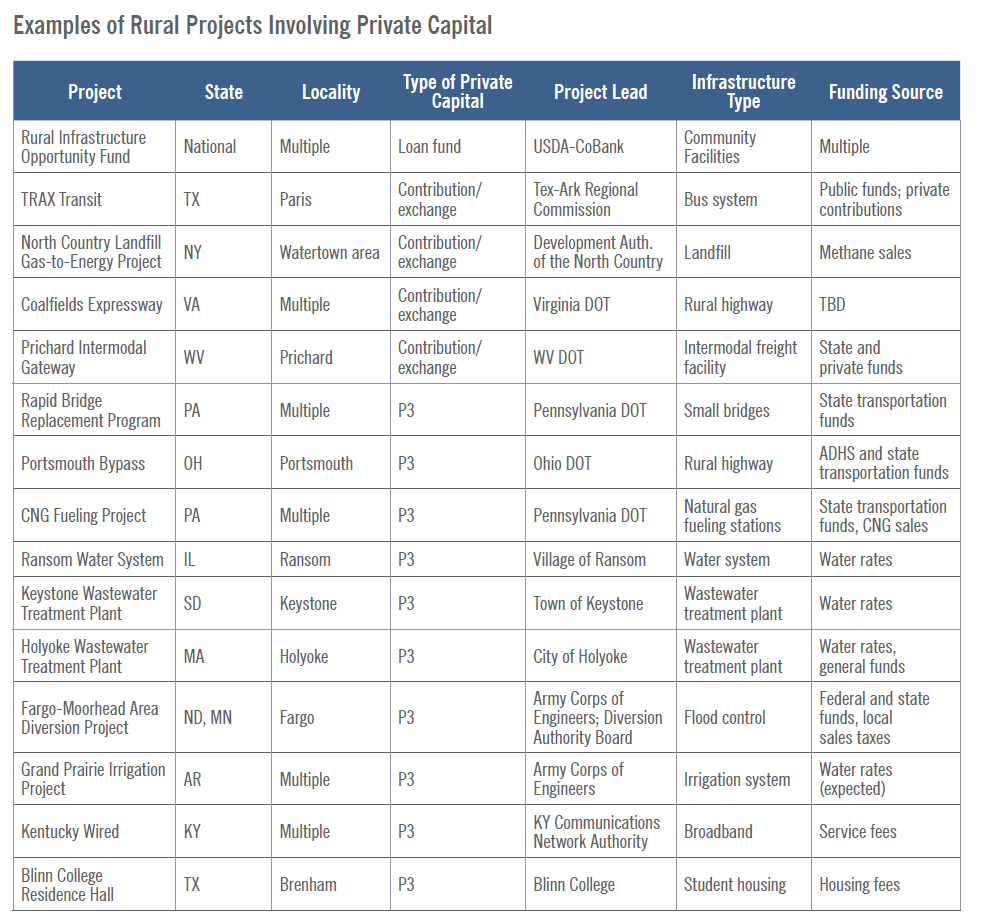Putting Private Capital To Work In Rural Infrastructure
Rural communities have overwhelming infrastructure needs but often lack the economies-of-scale necessary to attract private investors who can help finance infrastructure projects. Additionally, rural officials and staff often lack the resources and expertise to negotiate alternative financing approaches. Moreover, private investors will need to be repaid, and many rural communities lack available funding due to their smaller populations and tax base. BPC’s new report identifies five strategies to enable more rural communities to use private capital to help address their infrastructure needs.
Strategies to Enable More Rural Communities to Leverage Private Capital
- Targeted funding. Continued public funding for rural infrastructure is essential. In addition, support for predevelopment expenses, P3 screening, and life-cycle cost analysis would help rural communities lay the groundwork for private sector investment.
- Project bundling. A bundled suite of projects can bring the necessary scale to attract private sector interest as well as take advantage of economies of scale to deliver cost savings.
- Regional coordination. When approached regionally, infrastructure projects may be able to draw upon a larger revenue base, more financing options, and expertise from regional entities.
- Capacity building. Most rural agency staff has little experience with alternative approaches to infrastructure delivery and financing, so technical assistance is critical.
- Accessible financing. Making federal and state loan and credit programs easier for rural communities to access
could help them leverage private capital by bringing financing to the table.
Federal Recommendations
- ? An Office of Rural Partnerships, either in the White House or a cross-cutting cabinet agency, to coordinate “on-theground” technical assistance teams, encourage state and regional coordination, identify best practices, and provide pre-development funds to help communities develop projects that are appropriate for private investment.
- A Rural Bundling Pilot Program to help rural areas combine multiple projects into a single procurement in order to increase efficiency, reduce costs, and potentially attract private investment.
- A Rural Liaison in each infrastructure agency to help rural communities compete for funding or financing, which would help position those areas to attract additional private sector investment, and to coordinate and streamline application processes and eliminate duplicative requirements.
- Flexible financing for rural communities should be incorporated into any new infrastructure financing program, such as reduced application fees, long-term loans, or the potential for loan forgiveness. Moreover, infrastructure projects should be eligible for any new financing programs developed for rural areas outside an infrastructure package.

Download one-pager:
Putting Private Captial to Work in Rural Infrastructure
Share
Read Next
Support Research Like This
With your support, BPC can continue to fund important research like this by combining the best ideas from both parties to promote health, security, and opportunity for all Americans.
Give NowRelated Articles
Join Our Mailing List
BPC drives principled and politically viable policy solutions through the power of rigorous analysis, painstaking negotiation, and aggressive advocacy.